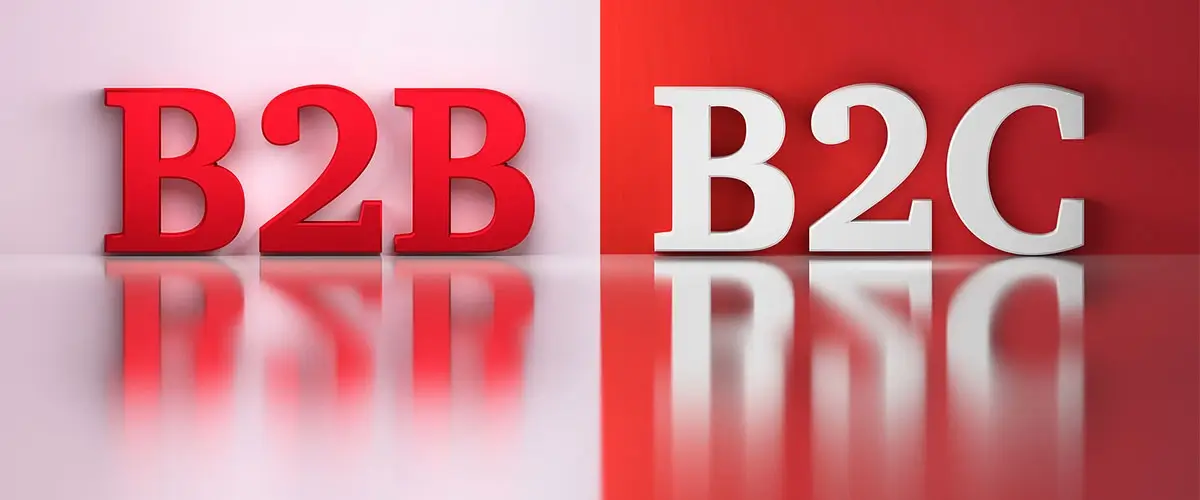In this comprehensive article, I’ll guide you through the intricacies of Business-to-Business (B2B) and Business-to-Consumer (B2C) warehousing, outlining the key differences and operational requirements unique to each model. By the end of the article, you’ll understand how these distinct business models impact everything from inventory management to shipping methods, and even how a joint B2B-B2C warehouse operation can function.
Key Takeaways:
- B2B and B2C warehouses function differently due to their unique consumer profiles, purchase decisions, and buyer behaviors.
- B2B warehouses face challenges like managing longer lead times and complex documentation, while B2C warehouses must deal with high-frequency, low-volume shipments.
- Inventory management differs between B2B and B2C warehouses, with B2B focusing more on strategic storage of goods, while B2C operations prioritize efficient picking strategies for individual orders.
- Picking, packing, and shipping methods also vary between the two models, reflecting the unique needs of their respective customer bases.
- Running a joint B2B-B2C warehouse operation is possible, but it requires strategic planning and a deep understanding of the differing consumer expectations and shipping costs.
What’s the Difference Between B2B vs B2C Warehouses?
Warehouse management isn’t about how much space you’ve got. It’s about how you use it.
The thing is, warehouses can store just about anything. This means that how you manage your warehouse depends on what kinds of goods you’ve got in your inventory – and what business model you’re supporting.
As consumers rely more on ecommerce channels, warehouses will need to learn how to manage B2C warehouses. Warehousing is no longer the exclusive domain of B2B activity. In the past, they predominantly served as the middleman between a retailer and a wholesaler and the retailer would interact directly with the customer.
Not anymore. Today, many warehouses are in the business of B2C fulfillment, with customers ordering online and the warehouse shipping directly to the customer. This trend has enormous implications on how warehouses organize themselves.
Contents:
BONUS: Before you read further, download our Warehouse Management Whitepaper to see how Logiwa uses real-time data to help you get up to 100% inventory accuracy and execute advanced fulfillment strategies like wave planning.
The Difference Between B2B and B2C Business

B2B businesses and B2C businesses are two different animals.
In business-to-consumer (B2C) commerce, you’re selling directly to the consumer. In business-to-business (B2B) commerce, you’re selling to other businesses. Customer profiles, purchase decisions, and buyer behavior differ dramatically between the two.
For instance, B2C purchases are for personal use. The decision to buy a B2C product is usually autonomous and driven by emotions-based marketing. Moreover, B2C purchase decisions are pretty low stakes. Oftentimes, a poor B2C purchase decision comes down to buyer’s remorse and an inconvenient ecommerce return process.
On the other hand, B2B purchases are for commercial use and can require a massive implementation plan. As a result, sign off from a purchasing committee or a senior procurement executive is often required. These decisions are fact based and high stakes. Making the wrong purchase decision can negatively impact a person’s career if it causes the company to lose money.
As a result, the nature of your business heavily affects your warehousing and distribution strategy and it’s important to consider their unique requirements when organizing your operation.
Generally speaking, warehouse management covers the following activities, so considering B2B versus B2C warehouse operations from all of these angles is an important exercise:
- Receiving
- Inventory management
- Picking, packing, and shipping
B2B vs B2C: The Difference Between Purchasing and Receiving
The Receiving Process in a B2B Warehouse
A B2B business must manage longer lead times, overseas suppliers, and complex compliance and documentation requirements.
To start, relationship management is critical in B2B businesses. First, you must understand what your suppliers can accomplish.Then you need to work this into your supply chain management strategy to avoid disappointing important B2B customers.
B2B businesses face longer lead times for several reasons:
- Their products are complex and therefore require more time for preparation and shipment
- Often, their suppliers are located overseas and need to deliver goods by air or sea
- Their suppliers need time to acquire parts from their own suppliers
Some things are unavoidable. If it takes a week to get your goods from Beijing to Baltimore, there’s not much you can do outside of paying for expedited shipping and even then, money may not solve much. That said, there are ways to reduce the lead times in your B2B warehouse’s receiving process:
- Order processing delays: Consider implementing a system with EDI functionality to eliminate manual data entry and streamline data transfers between yourself and your suppliers and customers
- Poor performance from suppliers: When suppliers don’t meet their SLAs, don’t let it slide. Conduct a review, communicate issues with suppliers, and if needed, consider whether there are better partners to work with.
- Inefficient shipping routes: Is your supplier partner using an indirect shipping route? Consider alternatives to see whether you can shorten your lead times.
B2B warehouses also have numerous documents to manage during the receiving process.
For instance, the warehouse will initiate a Purchase Order (PO). A supplier then acknowledges receipt of the PO and sends an Advance Ship Notice (ASN) to alert the warehouse of the package’s shipment, the estimated time of arrival, and the package’s details.
With an ASN, warehouses can identify discrepancies between the shipment and the purchase order before the shipment arrives. If an issue isn’t identified until delivery day, the lead time is effectively doubled, leading to delays for the end customer. B2B warehouses can easily receive ASNs if they have a robust inventory management software with EDI capabilities.
Moreover, if a warehouse has RFID functionality, they can further reduce lead times by using RFID scanners to quickly account for all the items requested in their purchase order.
A warehouse system with EDI functionality also eliminates much of the manual intervention required to manage the documents involved in international shipping and receiving.
The Receiving Process in a B2C Warehouse
The receiving process for B2C warehouses is complicated by low-volume, high-frequency shipments.
This means a reliable system integrated with your client’s ecommerce order management system is essential, especially if you’re interested in using a cross docking strategy.
Cross-docking limits the amount of time goods spend in inventory, reducing motion waste and cutting inventory carrying costs. To run a cross docking operation in a B2C environment successfully, you need accurate, real-time inventory data on customer orders and demand. Otherwise, your warehouse has no choice but to spend time storing incoming goods.
Moreover, a B2C warehouse faces unique challenges:
- Customers have a lower tolerance for customer delays whereas B2B customers understand the occasional unpredictability of global supply chains
- Relationship management is multiplied by the sheer volume of consumers expecting individual packages
- Cross-docking operations must address the fact that outbound shipments are going to multiple residential addresses rather than a handful of retailers
Integration of order fulfillment system and warehouse management system is essential to the receiving process in a B2C warehouse.
B2B vs B2C: The Difference In Inventory Management
Inventory Management in a B2B Warehouse
Inventory management software is a standard feature of any B2B warehouse. Often, an inventory management system is part of a warehouse’s larger WMS.
B2B businesses traditionally act as wholesalers. Their warehouse service doesn’t require much value-add in terms of packaging items. As a result, the focus is on strategically storing goods so they can be easily found.
Remember, it’s not just about storing your goods. It’s about being able to find them when you need them. B2B warehouses routinely look for ways to streamline the process of locating goods by:
- System integrations: Integrating order management or customer relationship management (CRM) tools directly with the warehousing system allows B2B warehouses to quickly process orders and move inventory
- Warehouse layout optimizations: By using their CRM and WMS data, B2B warehouses can identify their most frequently purchased goods and position them closest to the shipping area
- Automated storage and retrieval systems (AS/RS): Some companies choose computer-controlled system for storage and retrieval, automating the entire process
Learn more about the special considerations for wholesale and distributor warehouses by reading our Guide for Distributors and Wholesalers.
Better Warehouse Performance = Higher Profit Margins: Logiwa syncs accurate data across your entire interface so the inventory numbers you see on your dashboard are what your employees see on their devices. Learn how Logiwa uses real-time data to help you get up to 100% inventory accuracy and 2.5x shipments.
Inventory Management in a B2C Warehouse
The idea of countless “one-off” B2C orders is a nightmarish vision for most warehouse operators. Why bother with that mess when you can live in the saner B2B world of bulk orders?
Well, because as more consumers move online, warehouses that wish to stay competitive will need to offer B2C fulfillment services.
For most B2C warehouses, cluster picking, wave picking, zone picking or batch picking (also known as consolidated picking or multi-order picking) is the most efficient approach. Consequently, it’s important to optimize the warehouse for this strategy.
With batch picking, warehouse workers pick goods from each section for multiple orders. Rather than walking the warehouse floor one order at a time, a worker visits each section and grabs everything that’s needed for multiple orders. Once this is done, goods are sorted by order or delivery location at a separate spot in the warehouse, limiting back and forth movements.
Setting up your warehouse so that the most frequently picked items are located nearby further optimizes this process. Additionally, a sophisticated system helps improve this process by using data to determine the most optimal pick path.
What other factors should you consider for your B2C warehouse? Find out by reading our WMS Sofware for Ecommerce article.
B2B vs B2C: The Difference In Picking, Packing, and Shipping Methods

Picking, Packing, and Shipping in a B2B Warehouse
The specific picking process used by a B2B warehouse depends on the size of their warehouse and the nature of their orders.
- Discrete Picking: Products are picked one order at a time. This method is usually reserved for smaller warehouses or warehouses with a limited number of SKUs.
- Batch Picking: Items for several items are picked at once.
- Zone Picking: The manager divides the warehouse into zones and assigns workers to each zone. Workers only pick items from their zone. If an order requires goods from multiple zones, the “package” moves through the different zones.
- Wave Picking: Both batch picking and zone picking are combined.
Packing in B2B environments is relatively straightforward since accuracy is more important than aesthetics. Moreover, shipping is streamlined since warehouses are distributing a large volume of goods to a few warehouses rather than a high volume of individual orders to individual residences.
Nevertheless, transportation is still a huge cost and having a transportation management system (TMS) integrated with your fulfillment system helps pick the optimal shipping routes and cut down on shipping costs. Moreover, the high number of shipments to the same business addresses gives warehouses negotiating power with their shippers.
Picking, Packing, and Shipping in a B2C Warehouse
In an omni-channel world, a B2C warehouse can receive orders from anywhere.
A retailer may place an order for a customer from their point of sale (POS) system to be delivered to the customer’s home. A customer can shop from a brand’s website. They could also put in an order from their mobile device. As a result, it’s essential for a B2C warehouse to have a system that can:
- Process incoming orders from a number of order processing systems (e.g. ecommerce channels)
- Update the inventory management system in real-time to avoid stockouts
Moreover, the picking process is cumbersome, considering the high volume of individual orders. In this case, batch or consolidated picking is the best approach for B2C businesses. The right system can further enhance a B2C warehouse’s efficiency by telling workers what order they should pick products in.
Adding mobile scanners can further enhance a B2C warehouse’s picking capabilities. By integrating these tools into a company’s warehouse management or enterprise management system, B2C warehouses can cut down on picking errors and reduce time spent locating items by viewing bin and shelf locations easily through their handheld device.
The packing process presents another differentiating factor between B2B and B2C businesses. In a B2C environment, the warehouse is the last entity to touch the product before it’s delivered to consumers – aside from the shipper who shouldn’t be doing anything to change the content of the product. Usually, a packing slip is almost a must in a b2c order. Package type selection algorithms are used to find the right box to optimize shipping cost.
As a result, B2C companies entrust the brand experience with the warehouse. With the importance of unboxing experiences growing, warehouses can’t do a half-baked job packing up consumer goods adding a further step to a warehouse’s workflow.
Finally, B2C warehouses manage considerable transportation complications. While a B2B warehouse routinely sends bulk goods to a manageable number of business addresses, a B2C company sends individual deliveries to a large number of frequently changing residential addresses.
In this case, sophisticated planning tools are needed to:
- Facilitate effective inventory management to meet fluctuating demand without generating excess stock and increasing carrying costs
- Determine quick and efficient ways to consolidate goods in outbound trucks
- Determine the optimal route to take for delivering goods
Running a Joint B2B-B2C Warehouse Operation
If you want to introduce B2B to your B2C business, or vice versa, consider the following best practices:
- Plan your warehouse layout strategically: Generally speaking, your B2B bulk orders will require forklifts while your B2C goods will be in bins and shelves. To keep workers safe and avoid bottlenecks or traffic jams, plan your warehouse layout with these requirements in mind. You may want to have distinct sections of your warehouse for B2B versus B2C operations.
- Understand the different consumer expectations: While your B2B customers will understand delays, B2C customers won’t. Keep this in mind while assessing your ability to service both B2B and B2C consumers.
- Consider your varying shipping costs: While B2B orders are typically shipped on pallets using a warehouse’s dedicated shipping vehicles, B2C business rarely justifies this added expense. Exclusive B2C business typically opt for third-party shippers. Assess how you will organize and manage these different options or whether it makes sense to include your B2C shipments in a dedicated vehicle’s haul.
Running a joint B2B-B2C warehouse is doable, but it requires considerable dedication to process management, warehouse technology, and efficiency.
Unlock a personalized tour of Logiwa IO
Consumer Trends Require Warehouse Professionals To Be Familiar With Different Kinds of Warehousing
At present, you may be content to stick with B2B warehousing, but it’s important to stay aware of best practices in the B2C world as well. With more entrants to the warehousing business and the explosion of ecommerce, staying up to date on all areas of warehouse management is important. And if you’re ever presented with a lucrative opportunity for B2C warehousing, you’ll know exactly how to hit the ground running.
No matter your business model, B2B or B2C, your warehouse deserves a system that can keep your operations running in smooth harmony. Schedule a WMS demo to see Logiwa in action today.
FAQs
What is B2B and B2C in logistics?
As part of the B2C (business-to-consumer) model, products and services are sold directly to the consumer, while in the B2B (business-to-business) model, they are sold between companies.
What is B2B warehousing?
B2B order fulfillment involves high volume orders being shipped to businesses. Wholesale orders which ship to retailers for resale to consumers are a common type of B2B fulfillment.
What is B2C shipping?
B2C fulfillment deals with supplying goods directly to the consumer, compared to B2B fulfillment where large-scale shipments are made between businesses. In B2C fulfillment, brands may offer options such as free shipping or expedited same-day shipping to ensure the customer is satisfied with the services and the goods sold.
What is difference between B2B and B2C?
In B2B fulfillment, products are shipped directly to a business. Shipments are generally high-volume, can be expected to cost more and have longer delivery lead times, and the return process can be more complicated due to the larger order sizes, and contract terms. In B2C fulfillment, products are shipped directly to the customers. B2C fulfillment offers low-cost or free shipping which arrives within a short period of time and has clear return and refund policies.
Make high-volume order fulfillment your competitive advantage. Logiwa’s cloud order fulfillment software is built specifically for high-volume B2C and DTC businesses
Warehouse Management
Modern digital WMS powers a modern fulfillment experience





